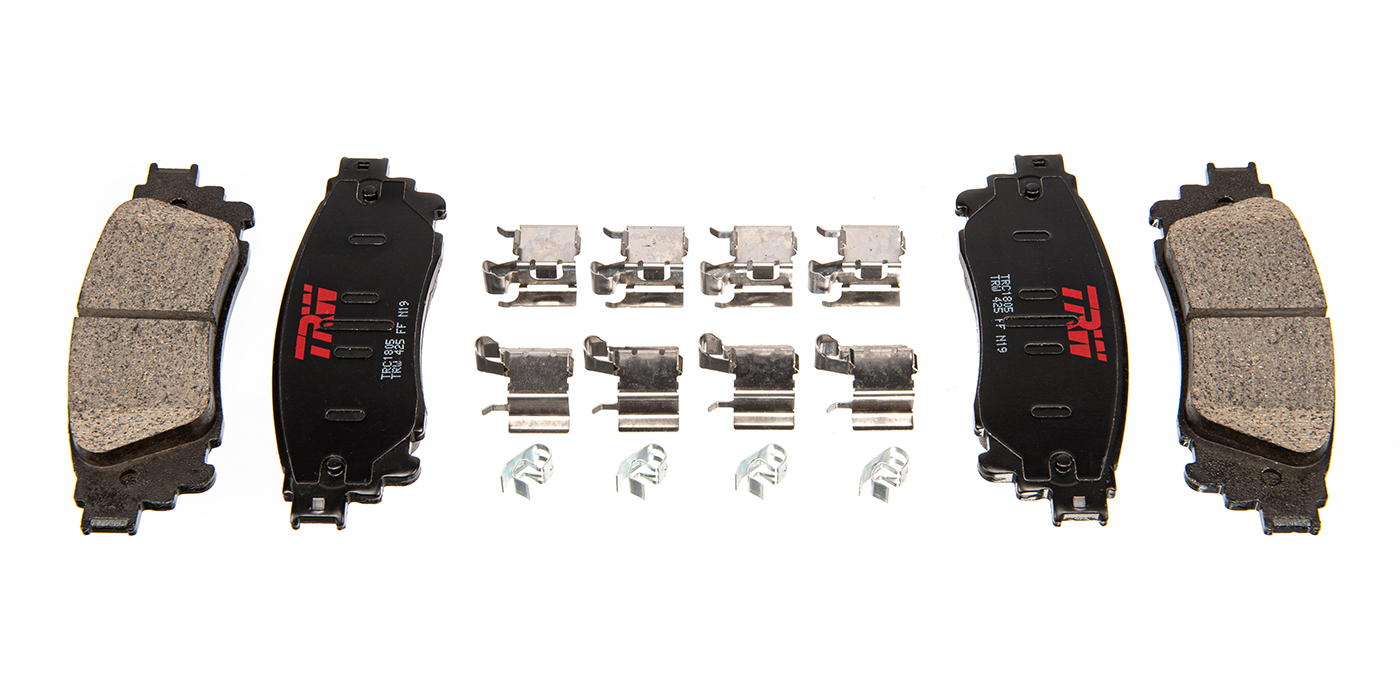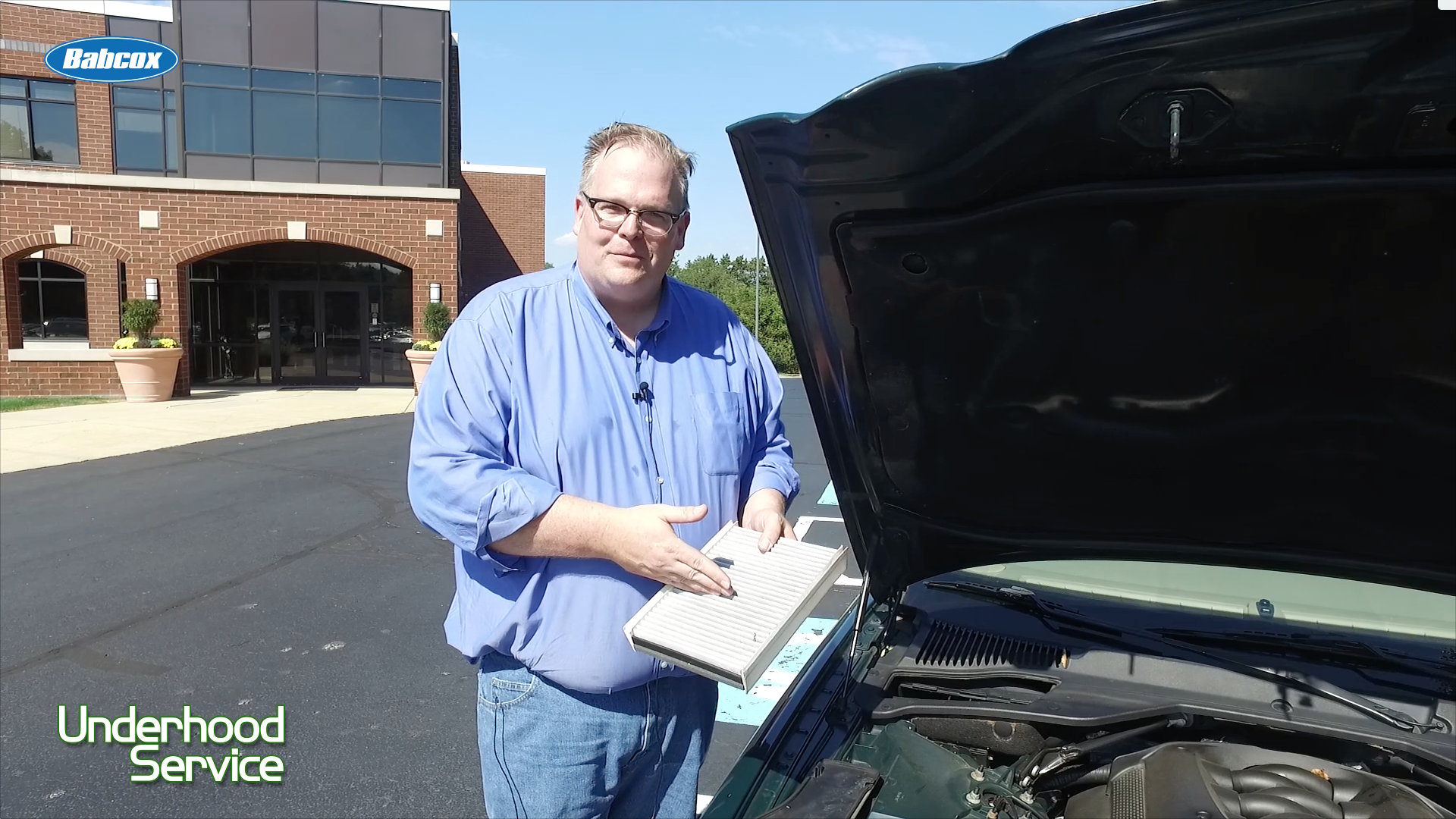It’s been a long winter here in the upper Midwest. Snowfalls have been well above normal in the Detroit area. However one of the sure signs of spring in our part of the world is when people start to dust off their Rods and Mods and start prepping for show season.
Here in Detroit we are fortunate to have one of the premier hot rod shows. AutoRama is always a sure sign that spring is on the way. Held in Cobo Hall, which is the same venue as the Detroit International Auto Show, it is the kickoff of the show car season in our area. You’re bound to see most any sort of vehicle here tricked out to the max. However, no matter what the customization is, they all need to be able to stop — although some only appear to need to descend a three-foot grade from the trailer to the pedestal.
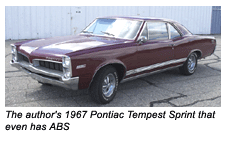 So in addition to checking out all the new colors, chops, channels, blown motors and how many TV screens can be jammed into a vehicle (37 was the most I saw this year), I’m always curious to see what kind of attention custom car builders pay to the braking system.
So in addition to checking out all the new colors, chops, channels, blown motors and how many TV screens can be jammed into a vehicle (37 was the most I saw this year), I’m always curious to see what kind of attention custom car builders pay to the braking system.
Over the past several years, I’m seeing brakes get much more attention and actually be part of the “statement” a customizer is making. Caliper’s that are color matched to the body are becoming more popular. Cross drilled and slotted rotors are everywhere. While most every vehicle has done an upgrade to at least a front disc system, I see many examples of shortcuts and poor integration of the new brake systems.
I’m sure many shop owners encounter a client that would like some work done on their custom vehicle. Perhaps it is limited to procedures that require very specialized equipment, such as an alignment, since most builders want to do the work themselves.
What I also see at these shows is that a great many of the vehicles are customized for hire. Everyone has a big story board sitting with their creation and most advertise the bulk of the work being done by professional body shops.
While their work, craftsmanship and attention to detail is remarkable, their expertise is not braking systems or design. Servicing a factory installed system requires skill and experience, as does doing a clean installation of an aftermarket or conversion.
I must confess as a long time hot rod guy, I have made some of these mistakes on my own before I entered my career as a brake engineer. My car of choice is the mid 1960’s Pontiac A bodies. I’ve owned several Tempest, Lemans and GTOs over the years. Currently I own a 1967 Tempest Sprint. I’ve done many brake changes on these vehicles including power brake upgrades, front disc upgrades and even an ABS system installation on a 1966 GTO convertible. I learned many things from these projects that I see commonly in other people’s efforts
If you find yourself doing this kind of work, what kinds of things should you be watchful of to help your customer end up with a safe and reliable brake system? Here are a few common areas of concern I noticed after ogling over show cars for many years.
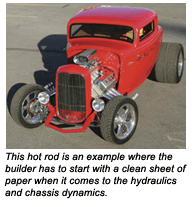 1. Mismatched Brakes and Apply Systems
1. Mismatched Brakes and Apply Systems
I regularly see vehicles with tens of thousands of dollars of powertrain and chassis upgrades. A 50’s or 60’s era vehicle will be upgraded with a front disc or four-wheel disc system. However, I see many cases where the original single circuit master cylinder (non-boosted) with a single (sometimes rusty) brake line feeding these systems. Maybe the builder wanted to save weight or needed the package space to drop in that blown 460 where the straight six used to be. This situation creates several areas of concern. First, a single-circuit master cylinder results in a complete loss of braking due to any single point hydraulic failure. Second, a disc brake system will consume substantially more fluid during stopping than the drum brake that was replaced. Therefore, the single-circuit master cylinder will bottom out at a much lower pressure or deceleration level than is desirable. The builder can easily create a condition that limits his deceleration level to 30 or 40% of the vehicle’s tractive capability.
Recommendation: Dual-circuit master cylinders should be used wherever possible.
2. Dual Circuit Master Cylinder Outlets Teed Together
This shortcut saves a little piping, but just converts the dual circuit, hydraulically independent system to a single circuit system that will result in a complete loss of brakes in the event of any hydraulic leakage.
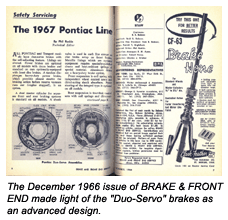 3. Master Cylinder Circuits Plumbed to the Wrong Axle
3. Master Cylinder Circuits Plumbed to the Wrong Axle
Many dual circuit master cylinders do not distribute the total stroke equally between the two circuits. One circuit will many times be 60-65% of the total stroke. Depending on the master cylinder chosen, the circuit with the long stroke may be closest to the front of dash or may not.
Recommendation: The master cylinder circuit that has the longest stroke should always be plumbed to the axle with the largest caliper (piston size). For the vast majority of vehicles, this will be the front axle. Rear engine vehicles are the typical exception.
4. Rear Disc Conversions
Some vehicle owners may decide to replace the little drum brake with the biggest rear disc kit in the catalog. Rear brake sizing is critical to the vehicle’s brake balance. Brake systems are sized to ensure that the front brakes will lock first under virtually all driving conditions. Brake sizing and balance calculations are highly vehicle and component specific and are well beyond the scope of most service environments.
Recommendation: If brake sizing is changed, the installer should plan to include an adjustable prop valve in the system. The setting should be established in accordance with the valve manufacturer’s procedures.
5. Brake Components Routed Very Near Hot Stuff
Engine upgrades and custom Exhaust routing can put high heat sources very close to master cylinders and brake pipes. Brake fluid boil will result in the loss of braking.
Recommendation: Maintain liberal clearance between exhaust components and brake components. An upgrade to a DOT 5.1 fluid can be cheap insurance for this concern. The DOT 5.1 fluid has a boiling point of approximately 40 degrees higher than traditional DOT 3 fluid.
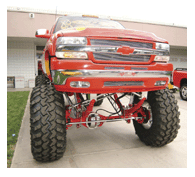 6. Off-Road and 4WD Customizers
6. Off-Road and 4WD Customizers
Increasing the tire size results in a decrease in brake output. Brake output is directly proportional to the ratio of rotor diameter to tire diameter. Making up for this in the brake system requires substantial changes in the component assumptions.
Without any accommodation you can expect to have to push substantially harder to achieve the same level of braking and can bottom out the brake system at levels below wheel lockup.
While these are only a few of the common things I notice regularly in the custom car arena, they highlight key things to be mindful off as you plan your project or are asked to assist with someone else’s vehicle. No matter how beautiful and customized a vehicle is, the ability to stop it comes back to basic engineering and design fundamentals. Spring is here, time to get out the polishing rags and buffing wheels.










